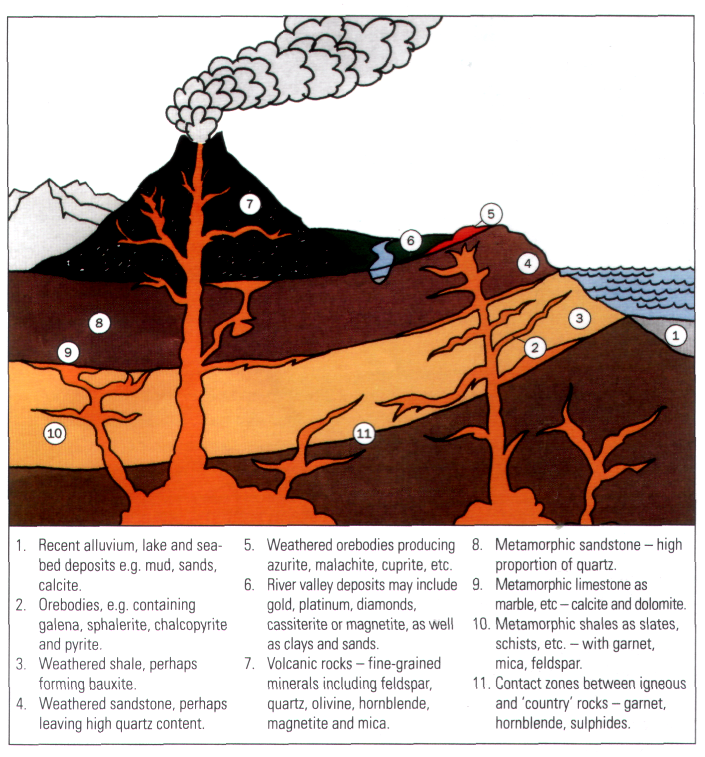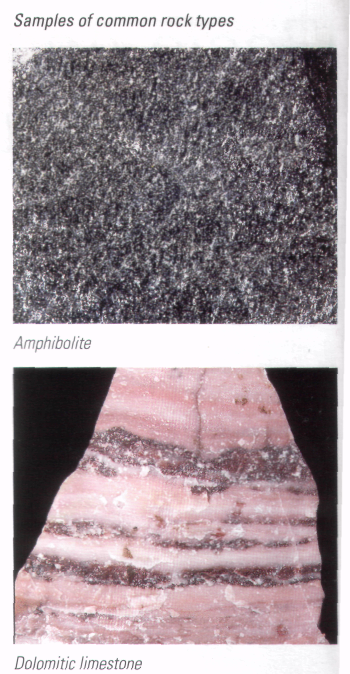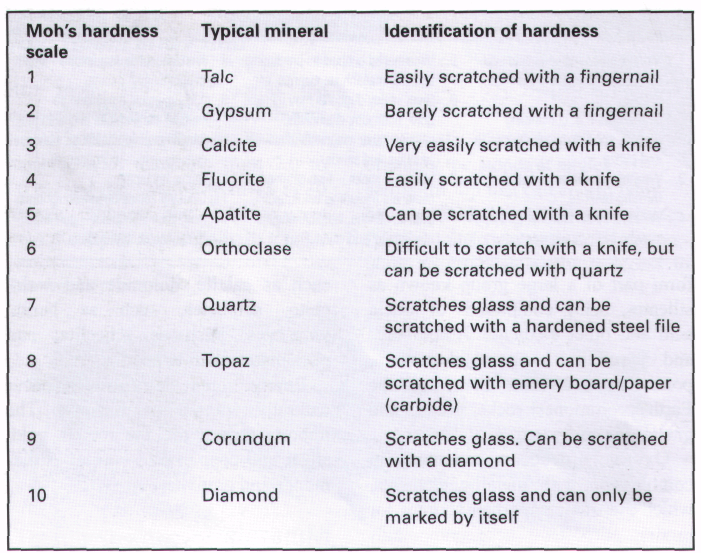
- •2007 Р.
- •3) Match a word in column
- •Rock Excavation in civil Engineering
- •Introduction to Remote Control Technology
- •Supplementary reading:
- •Introduction
- •Versatile Drillrig
- •Multiple Tasking in Western Australia
- •Improving Productivity
- •Exercises:
- •4) Give answers to the following questions:
- •Exercises:
- •1)Give Ukrainian equivalents of the following words and word combinations:
- •2) Give English equivalents of the following words and word combinations:
- •3)Fill the blanks with the necessary words and word combinations:
- •4) Quote the sentences in which these words and word combinations are used. Translate these sentences into Ukrainian:
- •5.Give answers to the following questions:
- •6. Tell what you know about:
- •Importance of Geology
- •Igneous Rocks
- •Investigation and Exploration
- •Exercises:
- •1) Give Ukrainian equivalents of the following words and word combinations:
- •4) Quote the sentences in which these words and word combinations are used:
- •5) Give answers to the following questions:
- •Exercises:
- •2) Give English equivalents of the following words and word combinations:
- •4) Quote the sentences in which these words and word combinations are used:
- •5) Answer the following questions:
- •6) Tell what you know about:
- •Vertical Crater Retreat
- •Exercises:
- •1) Give Ukrainian equivalents of the following words and word combinations:
- •2) Give English equivalents of the following words and word combinations:
- •3) Fill the blanks with the necessary words:
- •4) Quote the sentences in which these words and word combinations are used:
- •5) Answer the fallowing questions:
- •6) Tell what you know about:
- •Supplementary reading
- •Список використаної літератури:
- •«Наукова англійська мова»
Exercises:
1)Give Ukrainian equivalents of the following words and word combinations:
feasibility study, depressed metal prices, ore boundaries, cut-off grade, exhausted mine, search for new prospect, to acquire a more reliable database, magnetic properties of substances, at shallow depth, to identify the groundwater table.
2) Give English equivalents of the following words and word combinations:
пошук, детальна розвідка,оголятися (виходити на поверхню); вихід на поверхню мінералізації, електромагнітне обстеження, гірнича виробка, мінерали, що містять метал, непошкоджений ( цілий) зразок; бурова штанга; життєздатність рудного штоку (родовища)
3)Fill the blanks with the necessary words and word combinations:
homogenous rock, sedimentary rocks, in-situ ore, magnetic logging,
electromagnetic surveys, reverse circulation drilling.
Rapidly cooled lava flows harden into massive, … .
The value of … … can be calculated by applying market prices to metal contents, and deducting costs of treatment and transportation of concentrates, together with the smelter’s fee.
… … inside drill holes is also used, to obtain information for directing holes in core drilling programmes.
… … … is carried out with standard percussion rockdrills, using a special technique were the flushing media is introduced through a casing at the hole collar
… … measure variations in the Earth’s magnetic field, caused by magnetic properties of subsurface formations.
4) Quote the sentences in which these words and word combinations are used. Translate these sentences into Ukrainian:
Saleable product, direct mining costs, supply – demand situations, ocular inspection, economic life, the pull of rock masses, sound velocity, the open-center IDB, return rates and payback period, circular or elliptical in the profile.
5.Give answers to the following questions:
1) What is ore?
2) What does fluctuation of metal prices depend on?
3) What are geophysical methods used to explore the bedrock based on?
4) What types of drilling are used in mine development?
5) What infrastructure is required for a typical underground mine?
6. Tell what you know about:
1) about basic types of the rocks of the Earth’s crust
2) ore and ore bodies
3) prospecting and exploration
4) exploration drilling
5) underground mining
6) mine development.
Basic Aspects of Geology for Underground Mining
Importance of Geology
A thorough understanding of the geology of a mineral deposit is fundamental to its successful exploitation, and this is especially important for underground workings. Once a mining method is chosen, a major variance in the geology may make it difficult to change the approach to mining, compared to more flexible opencast work.
Let us review some of the important basic aspects of geology that may affect decisions about mining methods

The Earth's Crust
Tne earth's crust consists of a variety of rocks, formed under different circumstances, and with a wide variety of properties. Rocks usually consist of one or more minerals, ranging from single chemical elements to complex compounds. There are known to be more than 3,000 different minerals.
Of the 155 known elements, some of which do not occur naturally, oxygen is by far the most common, making up about 50% of the earth's crust by weight. Silicon forms about 25%, and the other common elements, such as aluminium, iron, calcium, sodium, potassium, magnesium and titanium, build up the total to 99% of the earth's crust.
Silicon, aluminium and oxygen occur in the commonest minerals such as. quartz, feldspar and mica, which form part of a large group known as silicates, being compounds of silicic acid and other elements. Amphiboles and pyroxenes contain aluminium, potassium and iron. Some of the Earth's commonest rocks, granite and gneiss, are composed of silicates.
Oxygen also occurs commonly in combination with metallic elements, which are often important sources for mining purposes. These compounds can form part of oxidic ores, such as the iron ores magnetite and hematite.
Sulphur also readily combines with metallic elements to form sulphide ores, including galena, sphalerite, molybdenite and arsenopyrite.
Other large mineral groups important in mining include: halogenides, such as fluorite and halite; carbonates, such as calcite, dolomite and malachite; sulphates, such as barite; tungstates, such as scheelite; and phosphates, such as apatite.
Rarely, some elements can occur naturally without combination. The important ones are the metals gold, silver and copper, plus carbon as diamonds and graphite.
Minerals
In some circumstances, the properties of individual minerals can be important to the means of mining, and will certainly be important for the means of extraction of the required materials to be exploited. More often, however, minerals will be mixed with others to form the various types of rocks, and the properties will be combined to form both homogenous and heterogeneous structures.
Feldspar accounts for almost 50% of the mineral composition of the Earth's crust. Next come the pyroxene and amphibole minerals, closely followed by quartz and mica. These minerals all make up about 90% of the composition of the Earth's crust.
 Minerals
have a wide variety of properties that can be important in their
usefulness to Man, to the best way to mine or tunnel through them,
or both. Some of these important characteristics, which are
also important for correct mineral identification in the field
before chemical analysis, are hardness, density, colour, streak,
lustre, fracture, cleavage and crystalline form. The particle
size, and the extent to which the mineral is hydrated or otherwise
mixed with water, can be very important to the behaviour of the rock
structure when excavated.
Minerals
have a wide variety of properties that can be important in their
usefulness to Man, to the best way to mine or tunnel through them,
or both. Some of these important characteristics, which are
also important for correct mineral identification in the field
before chemical analysis, are hardness, density, colour, streak,
lustre, fracture, cleavage and crystalline form. The particle
size, and the extent to which the mineral is hydrated or otherwise
mixed with water, can be very important to the behaviour of the rock
structure when excavated.
Mineral hardness is commonly graded according to the Moh 10-point scale shown in the table below.
. The density of light-coloured minerals is usually below 3.0. Exceptions are barite or heavy spar (barium sulphate - BaSO4 - density 4.5), scheelite (calcium tungstate -CaWO4 - density 6.0) and cerussite (lead carbonate - PbCO4 - density 6.5).
Dark coloured minerals with some iron and silicate have densities between 3.0 and 4.0. Metallic ore minerals have densities over 4.0. Gold has a very high density of 19.3. Minerals with tungsten, osmium and iridium are normally even denser.
 Streak
is the colour of the mineral powder produced when a mineral is
scratched or rubbed against unglazed, white porcelain, and may be
different from the colour of the mineral mass. Fracture
is the surface characteristic produced by breaking of a piece of the
mineral, but not following a crystallographically defined plane.
Fracture is usually uneven in one direction or another.
Streak
is the colour of the mineral powder produced when a mineral is
scratched or rubbed against unglazed, white porcelain, and may be
different from the colour of the mineral mass. Fracture
is the surface characteristic produced by breaking of a piece of the
mineral, but not following a crystallographically defined plane.
Fracture is usually uneven in one direction or another.
Cleavage denotes the properties of a crystal whereby it allows itself to be split along flat surfaces parallel with certain formed, or otherwise crystallographically defined, surfaces. Both fracture and cleavage can be important to the structure of rocks containing substantial amounts of the minerals concerned
Properties of Rocks
Rocks, normally comprising a mixture of minerals, not only combine the properties of these minerals, but also exhibit properties resulting from the way in which the rocks have been formed, or perhaps subsequently altered by heat, pressure and other forces in the earth's crust. It is comparatively rare to find rocks forming a homogeneous mass, and they can exhibit hard-to-predict discontinuities such as faults, perhaps filled with crushed material, and major jointing and bedding unconformities. These discontinuities can be important in mining, not only for the structural security of the mine, and for gaining access to mineral deposits, but also as paths for fluids in the earth's crust which cause mineral concentrations.
In order for mining to be economic, the required minerals have to be present in sufficient concentration to be worth extracting, and within rock structures that can be excavated safely and economically. As regards mine development and production employing drilling, there must be a correct appraisal of the rock concerned. This will affect forecast drill penetration rate, hole quality, and drill-steel costs, as examples.
One
must distinguish between microscopic and macroscopic properties, to
determine overall rock characteristics. As a rock is composed of
grains of various minerals, the m icroscopic
properties include mineral composition, grain size, the form and
distribution of the grain, and whether the grains are loose or
cemented together. Together, these factors develop important
properties of the rock such as hardness, abrasiveness, compressive
strength and density. In turn, these rock properties determine the
penetration rate that can be achieved, and how heavy the tool wear
will be. In some circumstances, certain mineral characteristics will
be particularly important to the means of excavation. Many salts,
for example, are particularly elastic, and can absorb the shocks of
blasting without a second free face being cut, thereby directly
influencing mining method. The drillability of a rock depends on
among other things, the hardness of its constituent minerals, and on
the grain size and crystal form, if any. Quartz is one of the
commonest minerals in rocks. Since quartz is a very hard material, a
high quartz content in rock can make the rock very hard to drill,
and will certainly cause heavy wear, particularly on drillbits.This
is known as abrasion.
icroscopic
properties include mineral composition, grain size, the form and
distribution of the grain, and whether the grains are loose or
cemented together. Together, these factors develop important
properties of the rock such as hardness, abrasiveness, compressive
strength and density. In turn, these rock properties determine the
penetration rate that can be achieved, and how heavy the tool wear
will be. In some circumstances, certain mineral characteristics will
be particularly important to the means of excavation. Many salts,
for example, are particularly elastic, and can absorb the shocks of
blasting without a second free face being cut, thereby directly
influencing mining method. The drillability of a rock depends on
among other things, the hardness of its constituent minerals, and on
the grain size and crystal form, if any. Quartz is one of the
commonest minerals in rocks. Since quartz is a very hard material, a
high quartz content in rock can make the rock very hard to drill,
and will certainly cause heavy wear, particularly on drillbits.This
is known as abrasion.
Conversely, a rock with a high content of calcite can be comparatively easy to drill, and cause little wear on drillbits.
As regards crystal form, minerals with high symmetry, such as cubic galena, are easier to drill than minerals with low symmetry, such as amphiboles and pyroxenes.
 A
coarse-grained structure is easier to drill, and causes less wear of
the drill string than a fine-grained structure. Consequently,
rocks with essentially the same mineral content may be very
different in terms of drillability. For example, quartzite can be
finegrained (size 0.5-1.0 mm) or dense (grain size 0.05 mm). A
granite may be coarse-grained (size >5 mm), medium-grained (1-5
mm) or finegrained (0.5-1.0 mm).
A
coarse-grained structure is easier to drill, and causes less wear of
the drill string than a fine-grained structure. Consequently,
rocks with essentially the same mineral content may be very
different in terms of drillability. For example, quartzite can be
finegrained (size 0.5-1.0 mm) or dense (grain size 0.05 mm). A
granite may be coarse-grained (size >5 mm), medium-grained (1-5
mm) or finegrained (0.5-1.0 mm).
A rock can also be classified in terms of its structure. If the mineral grains are mixed in a homogeneous mass, the rock is termed massive, as with most granite. In mixed rocks, the grains tend to be segregated in layers, whether due to sedimentary formation or metamorphic action from heat and/or pressure. Thus, the origin of a rock is also important, although rocks of different origin may have similar structural properties such as layering.
The three classes of rock origin are: Igneous or magmatic: Formed from solidified lava (at or near the surface) or magma (underground). Sedimentary: Formed by the deposition of reduced material from other rocks, organic remains or by chemical precipitation (salts etc.). Metamorphic: Formed by the transformation of igneous or sedimentary rocks, in most cases by an increase in pressure and heat.
